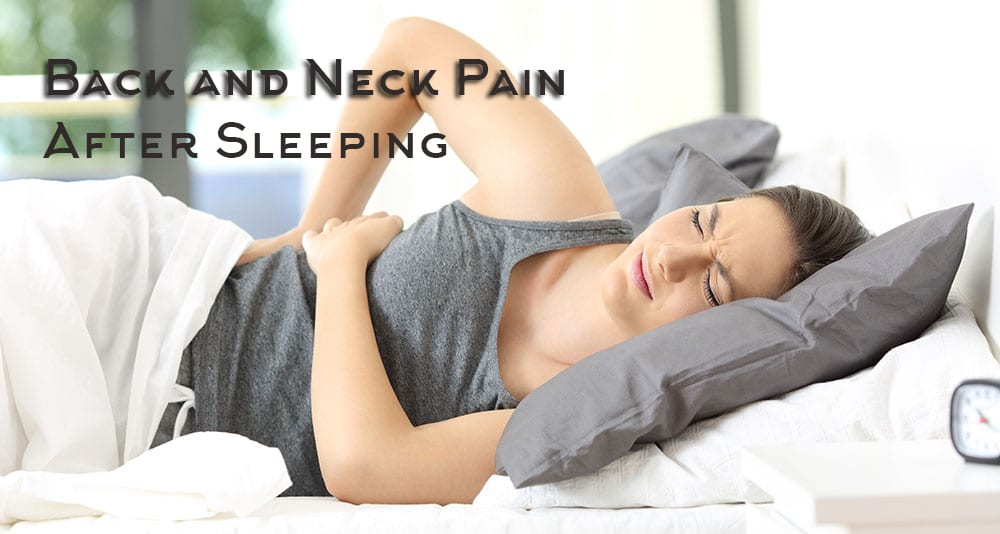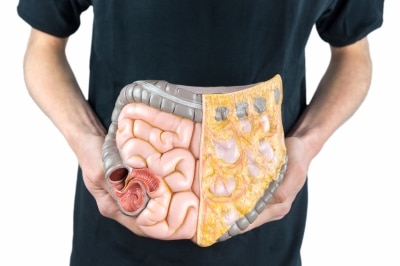Suffering from upper back pain after sleeping?
It’s essential to find the right treatment for your condition!
(Global Burden of Disease study named lower back pain – leading cause of disability across the globe.)
The constant neck pain and stiffness can rob you of a good night’s sleep. However, your resting position can also dictate the severity of your neck pain from sleeping. Also, if you can’t get any sleep because of daytime pain and stress, it can result in pain at night. This article is intended to help stop the vicious cycle of upper back pain after sleeping a few hours and how to get your much-needed sleep back on track.
What’s even more interesting is that most back pain isn’t caused by serious medical conditions, like cancer or arthritis. Instead, it’s often brought on by stress or strain from bad posture, awkward sleeping positions, and other lifestyle habits.
https://posts.gle/ykpuL
Correlation between sleep and pain
Sleep is an essential process. According to science, our biological systems and our bodies become active when we sleep. Our brains get rid of the day’s gunk and consolidate memories, and our bodies repair and renew at the cellular level.
Studies have shown that sleeps influence everything, from weight and immunity to moods and productiveness. Most of these processes are believed to be directly related to sleep, meaning they affect and are affected by the quantity and quality of sleep.
Two-thirds of those who have chronic pain have issues with sleep; this is according to the National Sleep Foundation. People recovering from surgery or injury may also have trouble sleeping due to the acute pain associated with the conditions.
Common Causes of Back and Neck Pain After Sleeping
Inflammatory Back Pain
Spondyloarthritis* is a broad term for inflammatory disease.
(*Spondyloarthritis is a type of arthritis that attacks the spine and, in some people, the joints of the arms and legs. )
It typically affects the spine and sometimes the peripheral joints. Joint inflammation comes and goes. It is generally accompanied by fatigue. Diagnosis can sometimes be difficult, but most often done through obtaining a medical history and x-rays.
Muscle Overuse
Repetitive activities and tasks can cause strain to the upper and lower back muscles, leading to muscle overuse. A classic example of this condition is when a pitcher in baseball throws the ball in the same rotating motion, further adding stress and pressure to the neck and shoulders. If your work requires you to do the same movements every day, you may start to feel muscle strain, irritation, or spasms. This could lead to chronic back pain. Treatment for muscle overuse includes full rest, physical therapy, and application of a heating pad on the problem areas to increase blood flow.
Poor sitting or sleeping Posture
You can indeed strengthen your muscles, joints, and ligaments by weight training, stretching, and exercising. But did you know you can also adversely condition your entire body through poor posture? You can damage your spinal cord, upper and lower back, or rotator cuff tendons by slouching for too long. When you place your spine in an awkward posture for long periods, you put stress and pressure on it that can result in long-term pain and stiffness.
If you want to stop experiencing upper back pain after sleeping, you need to correct your posture. Remember to stretch frequently. Sometimes, you may have to see a physical therapist. You can also take advantage of an adjustable mattress and a memory foam pillow to help you correct or maintain your body’s posture.
Herniated Disc
Discs are the rubber-like cushions nestled between the vertebrae. When tiny bits of the cushion find their way through the vertebrae, they can put pressure on the spine and cause severe pain in the back. The symptoms usually occur in the lower back but can sometimes appear as upper or mid-back pain. With it may come weakness and numbness in the legs, hips, and arms. People suffering from a herniated disc or a pinched nerve often have difficulty finding comfort, as the pain can be excruciating. A trip to the doctor is often necessitated.
Myofascial Pain
Myofascial pain usually originates from an injury or overuse of the hips, spine, or knees. Severe pain can spread throughout the body and contribute to upper back and neck pain after sleeping. The painful soft tissue can be a challenge to treat. Doctors are still looking for explanations as to why myofascial back and neck pain persists. Physical therapy, a memory foam pillow, and an adjustable mattress frame can help treat existing chronic pain. Also, make sure you have a good mattress. Mattresses that are constructed from memory foam, foam, latex, pocket coils, or a hybrid of these, can cushion painful areas allowing you to get the restorative sleep necessary for pain relief.
Traumatic Injury
Accidents that cause sudden trauma to the muscles of the back can lead to acute back pain and compression fractures. These situations that cause these vary – from falling to the incorrect lifting of heavy objects. The symptoms of the injury can appear instantly after the incident or manifest later.
Sometimes the injury is not apparent. It may demonstrate as upper middle back pain after sleeping. If not diagnosed or treated immediately, long-lasting complications may occur. Seeking the help of a medical expert is vital in these circumstances. You can also ask your doctor for a referral to physical therapy clinics and centers.
Solutions to Back Pain After Sleeping
Heat and Cold Compression
Heat and cold compression are two of the best solutions to shoulder back pain from sleeping on the side. According to numerous scientific studies, applying heat and cold packs to your upper back neck pain together with sleeping with the right pillow and mattress can give immediate pain relief and comfort. [1] Ice packs, in particular, are incredibly efficient in treating injuries such as muscle spasms, neck strain, hip pain, or shoulder joint inflammation. That is because the sudden cold can provide a numbing effect to the problem areas.
A heating or warm pad can also loosen up pain and stiffness on the shoulder joints, neck muscles, knees, hips, or legs. It is essential, however, to follow the instructions that come with the heating pad to ensure safe application. A hot water bottle can be used as an alternative.
Application of Pain Relief Cream
There are a wide variety of over-the-counter pain relief medications you can use to treat upper back and neck pain after sleeping. Pain relief creams that contain capsaicin are known to be quite efficient in treating night pain caused by osteoarthritis, degenerative disc disease, and rotator cuff tendinitis. Creams that contain menthol can also temporarily numb the pain and stiffness caused by sleeping in the wrong sleep position. However, using too much menthol cream may also cause you to be more sensitive to pain at night, so moderate use is advised.
Correct Office Ergonomics
Upper back and neck pain after sleeping are common among people who strain and slouch all day at their desks. Because their spine, hips, legs, and shoulder blades are positioned in a poor sitting posture, they can develop muscle tension and neck pain. Proper ergonomics at the office can help prevent injuries to the cervical spine, spinal canal, neck, and shoulder, as well as, the upper back pain. Adjustable desks that allow you to sit or stand without disrupting your workflow can help relieve muscle and joint pain.
Exercise
Proper exercise is vital to a person suffering from rotator cuff injuries, muscle spasms, spinal misalignment, and shoulder stress. There are a lot of easy, low-impact exercises that help with these conditions. Brisk walking, swimming, and yoga are some of the activities you can do to treat upper back and neck pain after sleeping. Exercise can also loosen up the joints and muscles. Also, exercising produces feel-good hormones, such as endorphins, which is also our brain’s natural painkiller.
One of the major causes of upper back pain after sleeping is poor posture at night. Undue pressure to the spine, joints, and muscles can cause acute and long-term pain. Poor posture can be caused by sagging mattresses, a poor bed frame, or improper use of pillows.
Use Pillows Effectively
Pillows are one way to help you sleep in a proper sleeping position. By propping your problem areas with a pillow, you can improve your chances of getting a restful night’s sleep. The correct pillow and mattress can also support your spine and prevent you from developing any stiffness or pain at night. The important thing is you reduce the strain around the joints.
Pillow Use for Side Sleepers
For side sleepers, putting a pillow between your knees can lift your one leg and keep your hips and knees in a neutral alignment. This position also helps relax the hip and stomach muscles. Side sleepers can also use a small pillow to fill up the space between the mattress and your waist or neck curve.
References
- The Efficacy of Thermotherapy and Cryotherapy on Pain Relief in Patients with Acute Low Back Pain, A Clinical Trial Study. Morteza Dehghan; Farinaz Farahbod. (2014, September 20). Retrieved from National Center for Biotechnology Information, U.S. National Library of Medicine: https://www.ncbi.nlm.nih.gov/pmc/articles/PMC4225921/
Subscribe To Our Newsletter
Join our mailing list to receive the latest news and updates from our team.





